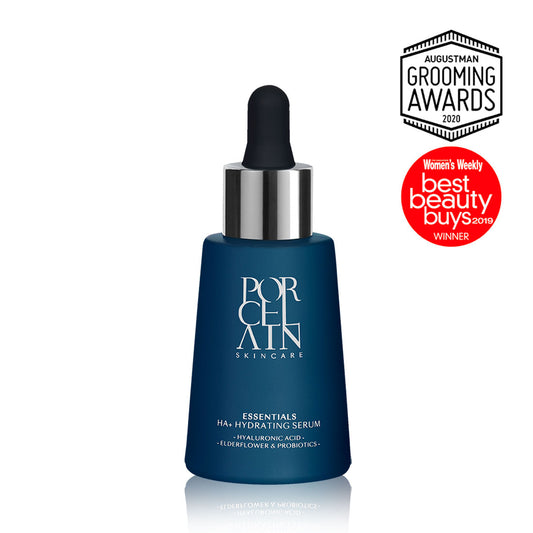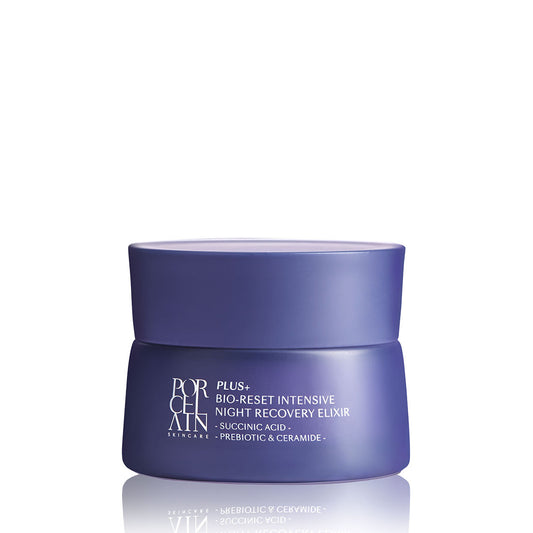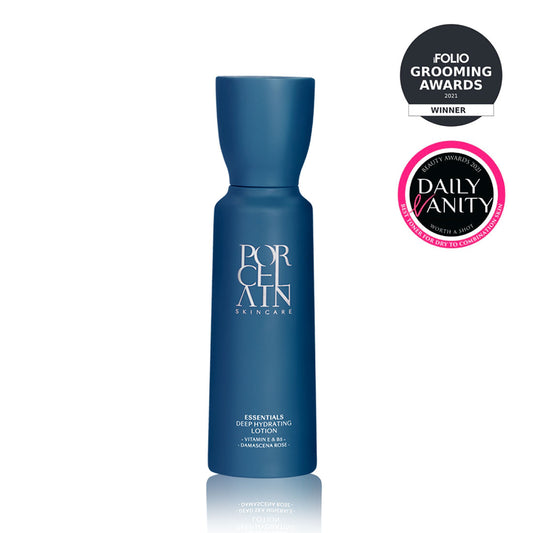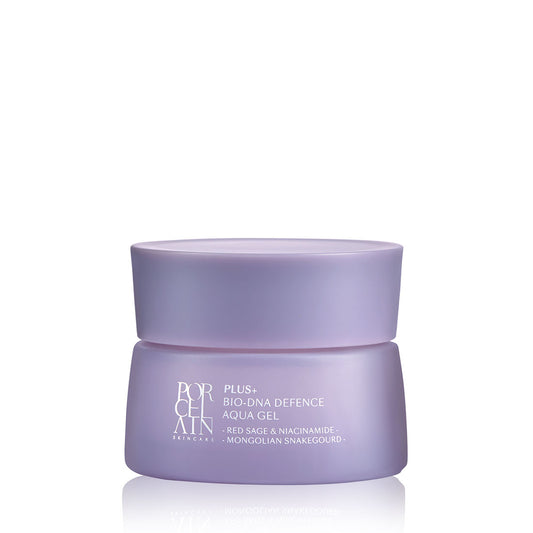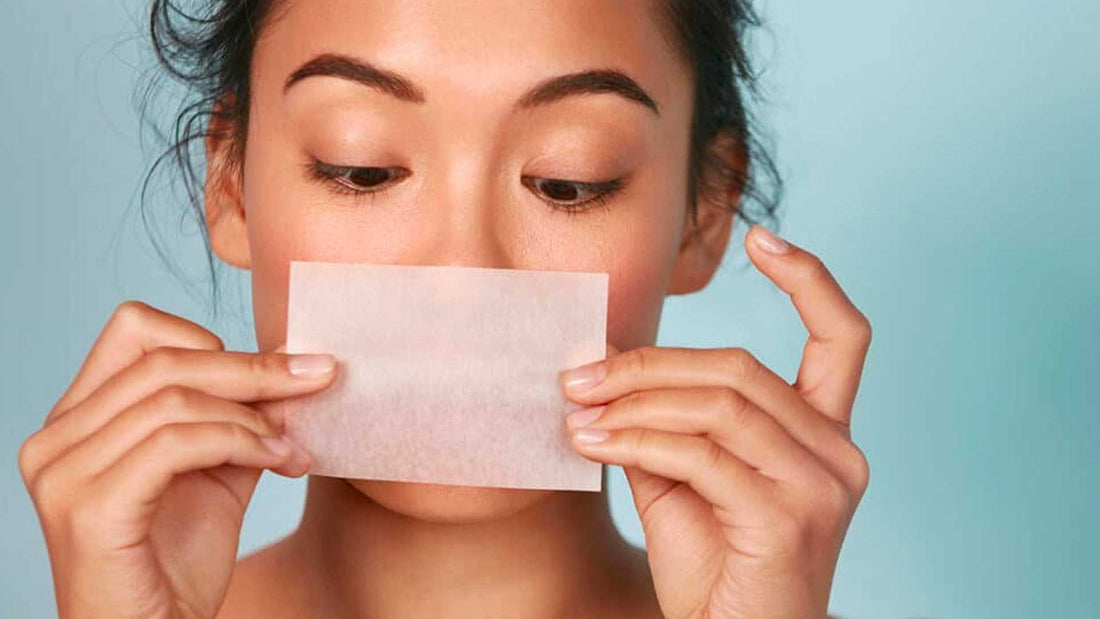The root to solving all your skincare issues is to understand your skin. With various skin type charts and quizzes floating out there, it can get quite hard to discern your type and derive what it needs to improve. Thus, we’re here to provide the ultimate guide to knowing your skin type and how to make it healthier and glow from within.
Discovering your Type:
Here’s a quick way to discover your skin type: in the middle of the day, grab a tissue paper (preferably 1 ply) and gently press it into your face for 3 seconds, covering the forehead, cheek, nose and chin. This quick test helps to you determine how much oil (aka Sebum) is on your skin surface and derive your skin type

Important note: For the greatest accuracy, do this process when your skin is free of make up or setting/mattifying powders as they can reduce the amount of sebum on your skin surface.
We are looking to see if the tissue become slightly translucent (like how blotting paper gets translucent when it picks up oil from the skin).
If your tissue is lightly translucent: Normal Skin
If your tissue has a light translucency on all the areas it was pressed into, congratulations, you have a normal skin type. This is great as it means that your skin is balanced and healthy. However, effort is still required to maintain that balance. Stick around and learn how you can maintain its health in the long run!
If your tissue is mostly translucent: Oily Skin
If your tissue comes off translucent after the test, it indicates that your skin is oily.
Oily skin often gives a shiny appearance and is largely a result of skin pH unbalance.
Oily skin’s imbalance lies in an over-production of sebum to compensate for a lack of hydration. Sebum is your skin’s way of retaining moisture and hydration. When there is a lack of hydration, the skin produces more oils to prevent further loss of hydration. This additional sebum production also explains why those of us with oily skin tend to experience congestion (whitehead, blackheads etc).
If your tissue is mostly unchanged: Dry Skin
If your tissue comes off unchanged (meaning no signs of translucency) after the test, it indicates that your skin is dry.
Dry skin often feels rough and tight, with no shiny appearance throughout the day. Like oily skin, dry skin is also a result of skin pH unbalance.
Dry skin’s imbalance lies in an under-production of sebum. Since sebum is your skin’s way of retaining moisture and hydration, a lack of it causes your skin to experience a lot of hydration and moisture loss.
Typically, those with dry skin do not experience breakouts due to the lack of sebum. Instead, they often experience redness and sensitivity to products or environmental triggers (wind, sunlight, cold etc).
If your tissue is translucent/unchanged on some parts: Combination Skin
If your tissue comes off translucent or unchanged on certain parts, it indicates that your skin is combination.
Overall, your skin still experiences pH unbalance.
Based on the specific area, the unbalance can be caused by various factors. For the oilier areas, the imbalance is due to an over-production of sebum to compensate for a lack of hydration. For the drier areas, the imbalance is due to an under-production of sebum.
What about other skin types like Acne Prone or Sensitive skin?
Fun fact: Acne-prone skin is not actually a skin type but rather a skin condition!
Skin types are determined by genetics whereas the condition of our skin can greatly vary according to internal and external factors. These factors can vary from stress, climate, hereditary factors, diet and your skincare products.
Acne-prone skin is a result of several factors combined that cause your skin’s natural barrier against irritants to be weakened. Once weakened, the skin is prone to aggressors like p.Acne bacteria (a known cause for acne) and irritation from pollutants and dirt. Acne-prone skin is often paired with other skin types like oily or combination skin. Thus, the way to manage Acne-prone skin would be to manage it based on your skin type.
Sensitive skin on the other hand, is a little different. Sensitive skin is often characterised as redness and reactiveness to skincare products. However, there are two major types of sensitive skin.
1. Sensitivity
The first is sensitivity. Sensitivity is a part of your DNA and often comes paired with other skin conditions like Eczema. To deal with this form of sensitivity requires products and treatments to strengthen the skin’s barrier and reduce reactiveness.
Some products that would be beneficial include ingredients like Ceramides and Allantoin to strengthen the skin’s surface against irritants.
2. Sensitised Skin
Sensitised skin shares the same symptoms as sensitivity; however, it is a result of damage to the outermost layer of the skin. This damage is often caused by pH imbalances and poor products that contain ingredients that could damage the skin. It then causes the skin to be more reactive to products or environmental triggers like wind and temperature. Plus, sensitised skin is often paired with a skin type (oily, dry or combination).
To deal with this form of sensitivity requires a two-prong approach. The first is to strengthen the skin’s outermost layer by rebalancing the skin’s pH based on your skin type. The second is to replace products that contain known irritants like Sulfates (Sodium Laurel Sulfate / Sodium Laureth Sulfate), Parabens, Phthalates, Parfum/Fragrance and drying alcohols.
How to Care for Different Skin Types:
Though each skin requires various remedies, it is important to note that all these solutions are grounded in restoring your skin’s pH. Once you understand the pH balance of your skin, solving your skin’s issues can be quite simple!
Normal Skin: Maintain Balance
For normal skin, your skin’s pH is already well balanced. However, it is important to maintain such a balance. Thus, always ensure that the most fundamental aspects of a good skincare regime are in place:

- Double Cleansing to ensure the skin is deeply cleansed of oil, dirt and bacteria build up
- Hydrating your skin to keep your skin’s oil production in check
- SPF to protect your skin against environmental aggressors (UV rays, bacteria, pollutants etc) that can create imbalances in the skin’s pH and cause damage to the skin
Oily Skin: Hydrate and Rebalance
As we mentioned earlier, oily skin’s imbalance lies in an over-production of sebum to compensate for a lack of hydration. Thus, the key to managing it would be to hydrate the skin and control sebum production.
Over our years of providing skincare services, we noticed that many clients had bad skincare habits that focused too much on controlling their sebum production without replenishing it with sufficient hydration. These habits included using harsh cleansers, cleansing the skin multiple times daily and blotting the skin throughout the day. These habits removed too much oil from the skin, causing the skin to produce more to replace it.
Thus, it is important to strike a balance. Hydrate the skin with ingredients like Sodium Hyaluronate while controlling oil production with ingredients like Tea Tree Oil (both of which are the main ingredients in the pH Balance Essence.

Important note: when it comes to using products containing high percentages of Tea Tree Oil, use it in low concentrations and in small doses to prevent overly drying the skin.
Dry Skin: Replenish the Essentials
Dry skin’s imbalance lies in an under-production of sebum. Thus, managing it requires replenishing the skin with oil and hydration.
Treat your skin with ingredients like:
- Sodium Hyaluronate to deeply hydrate the skin
- Ceramides to moisturise the skin surface and maintain the skin’s strength against environmental aggressors (UV rays, bacteria, pollutants etc)
- Jojoba Oil are the closest to skin’s natural oils and are great at forming a protective barrier for the skin to prevent moisture loss
- Allantoin to moisturise and heal the skin surface
Furthermore, should you be working in a cold and dry environment (like an office with air-conditioning), it is vital to keep your skin replenished throughout the day. Bringing a mid-day spritz along with you (like the Deep Hydrating Lotion) can help to rebalance your skin.

Combination Skin: Mixed to Match
Last, but not least, is combination skin. Combination skin poses a unique challenge as there can be as many as two different imbalances in play. With such a difference, it is important to tailor to each of them. While that may sound cumbersome, it’s not! Simply by hydrating your skin, you are already tackling one common aspect that lies between the two imbalances.
Similarly, search for products with ingredients such as:
- Hyaluronic Acid & Sodium Hyaluronate to hydrate the skin
- Aloe Vera Extract to soothe and hydrate the skin
For areas that are oilier, look to control the sebum production with BHAs (Salicylic Acid), Tea Tree Oil (in small concentrations and doses).
For areas that experience dryness, look for moisturising ingredients like Ceramides, Jojoba Oil, Allantoin and Glycerin.
—
We hope this basic guide to identifying and managing your skin type helps you to achieve healthier, radiant skin!
Need more assistance to solve your skincare issues? Book our Skin Discovery Enhanced which can show you eleven indicators of skin health using the latest technology. You'll also receive a personal diagnosis and prescription of a regimen suited for you,


